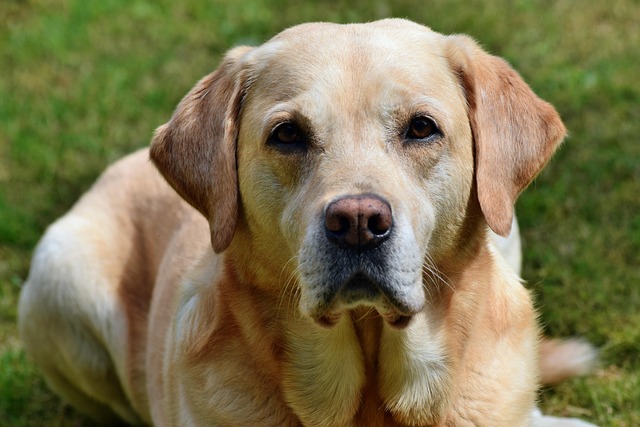
How do i train my dog to be obedient?
Watching your dog dart across the park ignoring your calls isn’t just frustrating—it can put them at risk near busy streets or public spaces.
Dog walking is supposed to be a pleasant time for people and dogs to enjoy each other's company, but when the dog drags the leash and rushes around, this beautiful moment is broken. How to use the leash to guide the dog elegantly and scientifically, both to ensure safety and maintain emotions, is an important topic that every dog owner needs to master.
Before discussing how to use the leash to stop the dog from rushing, we need to understand the dog's behavioral logic. As a social animal, dogs will establish their group status by competing for the order of walking in the wild. When the dog pulls the leash desperately, it may subconsciously regard itself as a "leader" and think that the owner needs to follow its rhythm. This misunderstanding not only affects the dog walking experience, but is also likely to cause the dog to be injured or cause an accident. The common collars, chest harnesses and P chains on the market have their own characteristics. The collar has greater pressure on the neck, the chest harness disperses the force but has weaker control, and the P chain gently reminds the dog through the tightening principle. Choosing the right traction tool is the first step to correct the rushing behavior.
 When we are ready to guide the dog with a leash, the continuity of action and the transmission of emotion are crucial. Before setting off, calm the dog down, call its name in a gentle tone, and let its attention focus on the owner. During the walk, once you feel the leash is tight, do not pull it hard immediately, but stop quickly and keep silent. This short stillness is a silent communication, letting the dog realize that pulling will interrupt the walk. When the dog looks back at you or relaxes the leash, immediately praise it in a pleasant tone, and gently pull the leash to signal to continue moving forward. This "stop-wait-reward" cycle allows the dog to understand the owner's intention better than simple mechanical correction.
When we are ready to guide the dog with a leash, the continuity of action and the transmission of emotion are crucial. Before setting off, calm the dog down, call its name in a gentle tone, and let its attention focus on the owner. During the walk, once you feel the leash is tight, do not pull it hard immediately, but stop quickly and keep silent. This short stillness is a silent communication, letting the dog realize that pulling will interrupt the walk. When the dog looks back at you or relaxes the leash, immediately praise it in a pleasant tone, and gently pull the leash to signal to continue moving forward. This "stop-wait-reward" cycle allows the dog to understand the owner's intention better than simple mechanical correction.
During the training process, patience and wisdom need to be combined. Some dogs are stubborn and may need repeated practice to understand. At this time, the owner's emotional management is particularly critical. Imagine that the dog is a child who is learning new skills. Every progress is worth celebrating, and every repetition requires tolerance. You can squat down and stroke the dog's hair during the training, and convey trust with your eyes and body language. When the dog gradually reduces pulling and begins to actively pay attention to the owner's pace, the establishment of this tacit understanding is far more precious than any reward.
In addition to basic traction skills, scene simulation training is also indispensable. From quiet community roads to crowded parks, different environments are a test for the dog's attention. In the early stages of training, you can choose a route with less interference, and then gradually increase the difficulty as the dog improves. When encountering other pedestrians or pets, use the leash to guide the dog to keep a proper distance in advance, and use snacks or toys to divert its attention. This step-by-step training method can not only improve the dog's obedience, but also enhance its ability to adapt to complex environments.
It is worth noting that the leash is not only a restraint tool, but also an emotional bond. In the process of stopping the dog's explosive charge, we must always focus on positive guidance to avoid making the dog feel fear or resistance. Every gentle traction and every encouraging word are strengthening the bridge of trust between the owner and the dog. When one day, you find that the dog no longer drags the leash, but quietly follows you and enjoys the fun of walking, this hard-won harmony is the best reward for patience and persistence. Use love and science to make every walk a sublimation of the relationship between humans and dogs. This is the true meaning of the leash.

Watching your dog dart across the park ignoring your calls isn’t just frustrating—it can put them at risk near busy streets or public spaces.

New puppy owners often find themselves rushing to clean up accidents before they set in, and that’s where puppy pad training becomes a game-changer.

If you've noticed your dog's waistline disappearing and your veterinarian has mentioned those few extra pounds, your first instinct might be to simply reduce the amount of food in their bowl.

Training a dog to use a designated spot indoors isn’t as daunting as many new owners fear, but it does take consistency and an understanding of your pet’s needs.

That moment of dread on a walk is all too familiar for many new dog owners. You see another dog approaching down the sidewalk of your neighborhood

If the sight of another dog on your neighborhood walk makes your heart sink as your own dog erupts into a frenzy of barking and lunging, you're not alone.